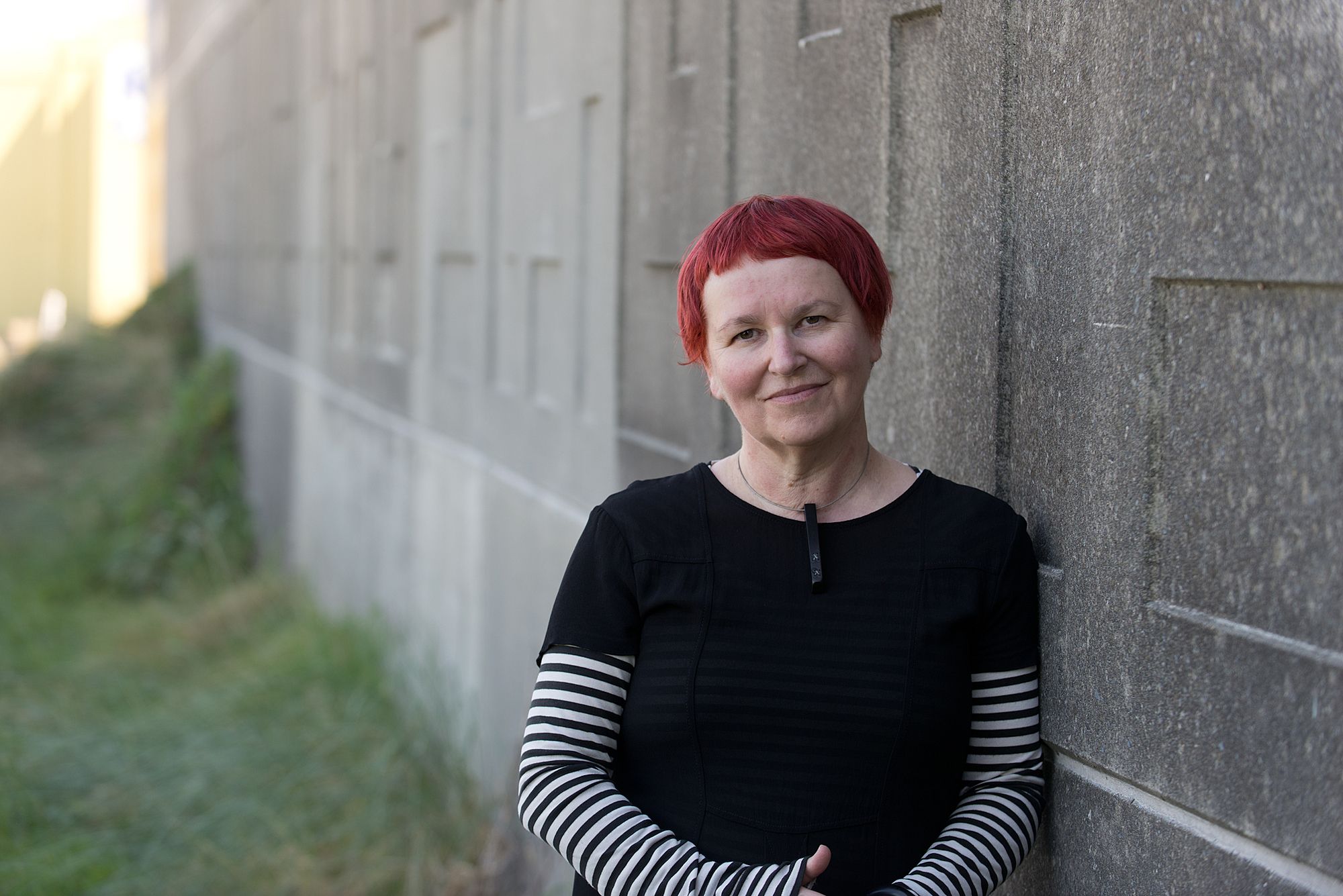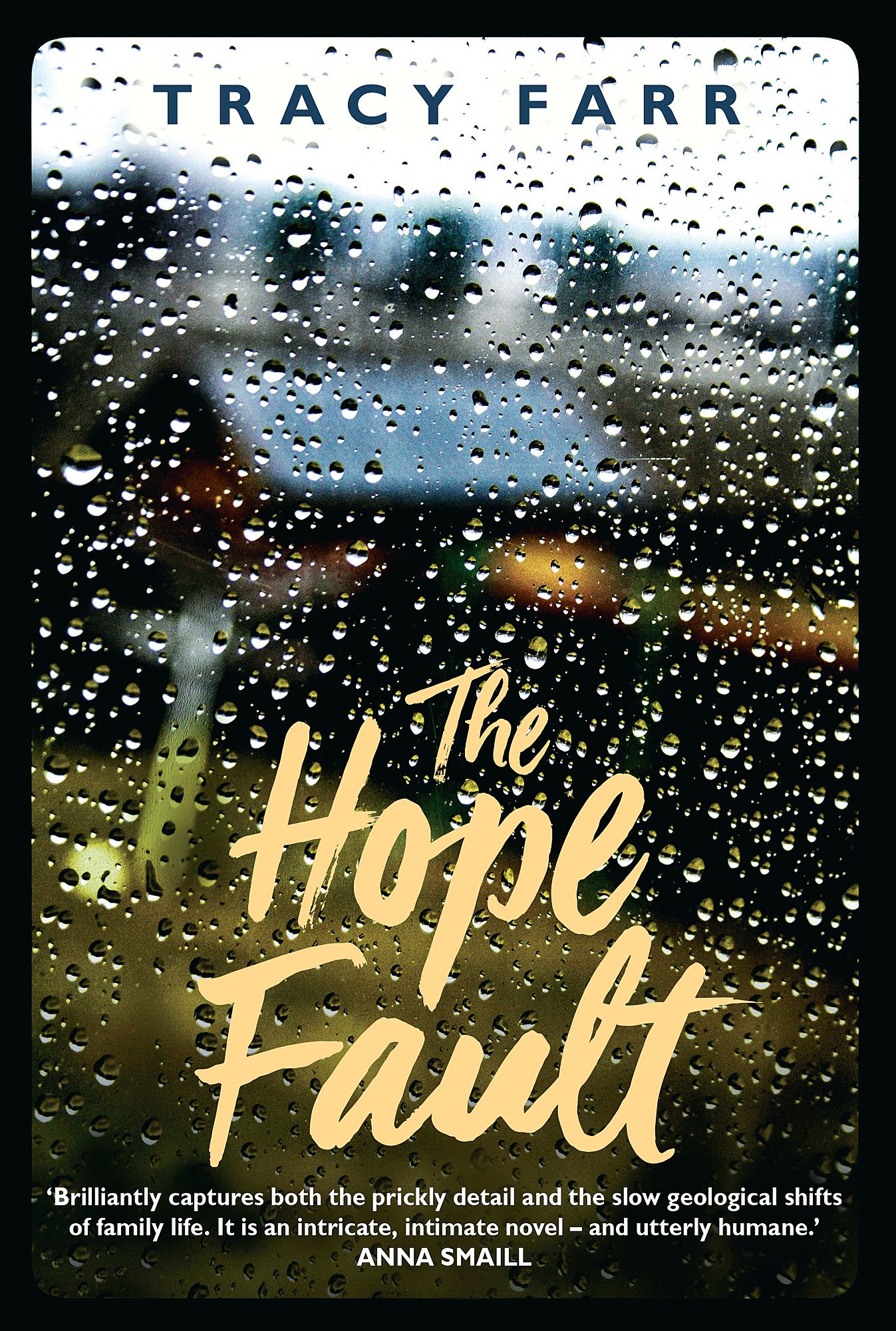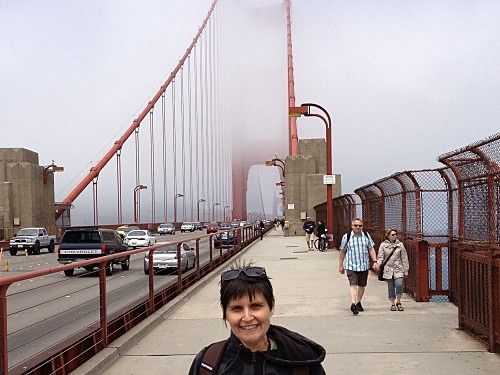Telescopic Time: A review of The Hope Fault
Pip Adam reviews The Hope Fault by Tracy Farr and finds an emotionally engaging book with a middle section so wonderfully surprising that she won't tell us what happens.
Pip Adam reviews The Hope Fault by Tracy Farr and finds an emotionally engaging book with a middle section so wonderfully surprising that she won't tell us what happens.
The first page of Tracy Farr’s new novel The Hope Fault displays the word ‘Rain’ in large letters, followed by a quote from J.R.R. Tolkien’s essay, ‘On Fairy-Stories.’ The next page holds one word: ‘Friday.’ After turning this page the novel begins under the section title declaring, ‘There’s a big black cloud over Cassetown.’ The Hope Fault tells the story of a family in imaginary Cassetown packing and ‘cooling’ a house that belonged to two of them but has recently been sold. The blurb on the back explains, ‘As the house is stripped bare, their secrets – and the complex, messy nature of family relationships – will be revealed.’ This is the story of the novel, but one of the most arresting things about this book is signalled by our entry into it: Those three words that remind us how we experience the world, through senses (Rain), time (Friday) and space (Cassetown).
Farr’s book has been described as casting a spell, and although it’s concerned with fairy tales and transformation, a large part of what makes her work so compelling isn’t magic, it’s the graft of a story well told. Farr uses space, time and sensual experience to pull off some impressive extreme craft sport in this book; the result is a compassionate and affecting novel that explores the play between our internal and external lives.
A discussion of plot would spoil a lot of this book’s fun; It’s been constructed partly as a puzzle, and the working out is part of the story. I don’t think a reader would fully ‘get’ this book if it wasn’t told in this slightly slant, riddling way. So, instead of talking about what the story is, I’d like to talk about how the story is told, not in an attempt to reveal the spell but in the hope that I might uncover even more magic.
Iris married Paul. Paul has a twin sister called Marti. Paul and Iris made Kurt who is about to turn twenty-one. Marti made Luce with a man who is not there...
The Hope Fault is broken into three parts, with the novel being book-ended by a fragmented, perspective-shifted narrative that takes place over three days. As the blurb promises, the family packing out the house is not straightforward. Iris married Paul. Paul has a twin sister called Marti. Paul and Iris made Kurt who is about to turn twenty-one. Marti made Luce with a man who is not there. Luce and Kurt are tight. Iris and Paul bought the house in Cassetown. Then Paul fell in love with Kristin, left Iris and the house was rented out. Kristin and Paul now have a baby which, in the best tradition of fairy tales, has no name.
Despite this complex and tangly history, we meet the adults of this novel in the calm aftermath of the uproar, and after the resentments have been settled and the hurt feelings largely repaired. Everyone is friends again. The site with the most potential for emotional turmoil surrounds the teenage children Kurt and Luce, but I’d argue that even this fraughtness isn’t the engine of the book’s progress. Instead, in these book-ended sections, I believe Farr has created a way of shifting through time and space using sensual experience.
A book has the ability to telescope time and The Hope Fault does so to great effect. The wet weekend draws out as time is slowed through the magnified descriptions of sense. In extreme close-up, Farr takes time to describe what things look like - how they feel. It’s almost an exercise in mindfulness, and I’d argue this ‘new pair of eyes’ (and skin and ears and tongue) is what lures us in. Farr’s writing is the gingerbread house that makes us forget time, or rather experience time in a different way.
A book has the ability to telescope time and The Hope Fault does so to great effect.
In a simpler perhaps more obvious way, time operates differently in these sections. We often experience a sort of ‘do over’ as the same event is described from inside several perspectives. This again has the effect of slowing down, of taking notice, of feeling our way into events rather than following cause and effect. And it definitely feels like we are inside these characters. Largely this is Iris’ story – she seems to be the best candidate to guide us through this knotted wood of a novel – but we are embedded just as deeply in the experience of the other characters.
One of my favourite parts of the story is a drunken walk Kurt takes along the coast in the rain and dark. Kurt blacks out and comes to throughout the walk, and the writing pulls our attention fully into his body and experience; we see what he sees and feel what he feels. This sense-based experience of travelling through a personal space and time (the disorientating effect of alcohol) is such an exciting way of not only telling a story, but of lifting the reader out of our own time and space and helping us to an emotional understanding of the character and their place in the family.
In his book Time Travel: A History James Gleick makes a claim for the book as a time travel machine. A book seems to hold both the absolute time of a predetermined ending, but also an ability to skip ahead, go back and even not finish the book. As a child of the age of relativity I was intrigued and mystified by Newton’s idea of absolute time and space. In my mind I created this odd state of all time lying complete, finished, and me traveling through space toward it.
This misunderstanding isn’t a new one. I’ve often been interested in the boundary between predetermination and choice, and nowhere are these ideas more awake than in a reverse-ordered narrative. It was while reading Martin Amis’ novel Time’s Arrow, a book which tells the story of a German Holocaust doctor from death to birth, that I realised that no matter how painful the protagonist’s life got, they could never commit suicide. In this way, reverse narrative can give an effect of absolute time in a way few other experiences can. It can make events and decisions inevitable in a way that is not often experienced in our forward-going lives.
Short time is long, long time is short, we are large in our world, we are tiny.
And it’s into this backward running stream that Farr pushes us. The reverse narrative that sits as the middle section of The Hope Fault – that breaks the weekend in two – takes place over 100 years. I’m reluctant to share much of what happens in this section, because it is such a wonderful trip. What I want to say is that it plays games of scale, introducing geological time, which feels inescapable, while simultaneously paying exact attention to the second and inches that can change a life. Farr balances these two ideas in a struggle that gives the section amazing momentum.
The middle section can be puzzled in relation to events in the imagined plot of the book, but it is also fiercely anchored to events outside the book. The Wahine disaster and the Boxing Day Tsunami remind us that the earth will have its way, and again reminds us of the artful game of scale this book plays; short time is long, long time is short, we are large in our world, we are tiny.
The echo of this middle section rings in the reader when they return in the last third of the book, to the house in Cassetown – a place so real it has to be made up – and the busy work of cleaning up a life. Breadcrumbs have been dropped in the middle section, and while some have been washed away by the rain, and others eaten by the snakes, we are left to see if we can find our way out. Farr has married narrative and plot to create an extremely emotionally engaging work.
The Hope Fault is published by Fremantle Press. Tracy Farr can be found at tracyfarrauthor.com.


